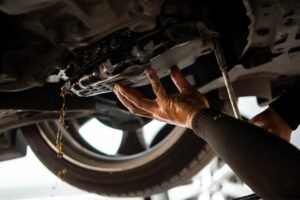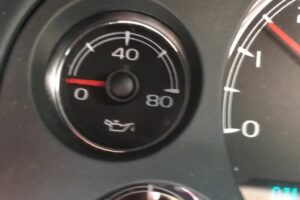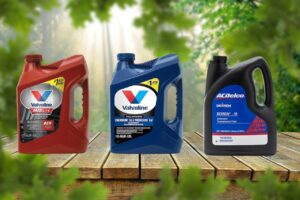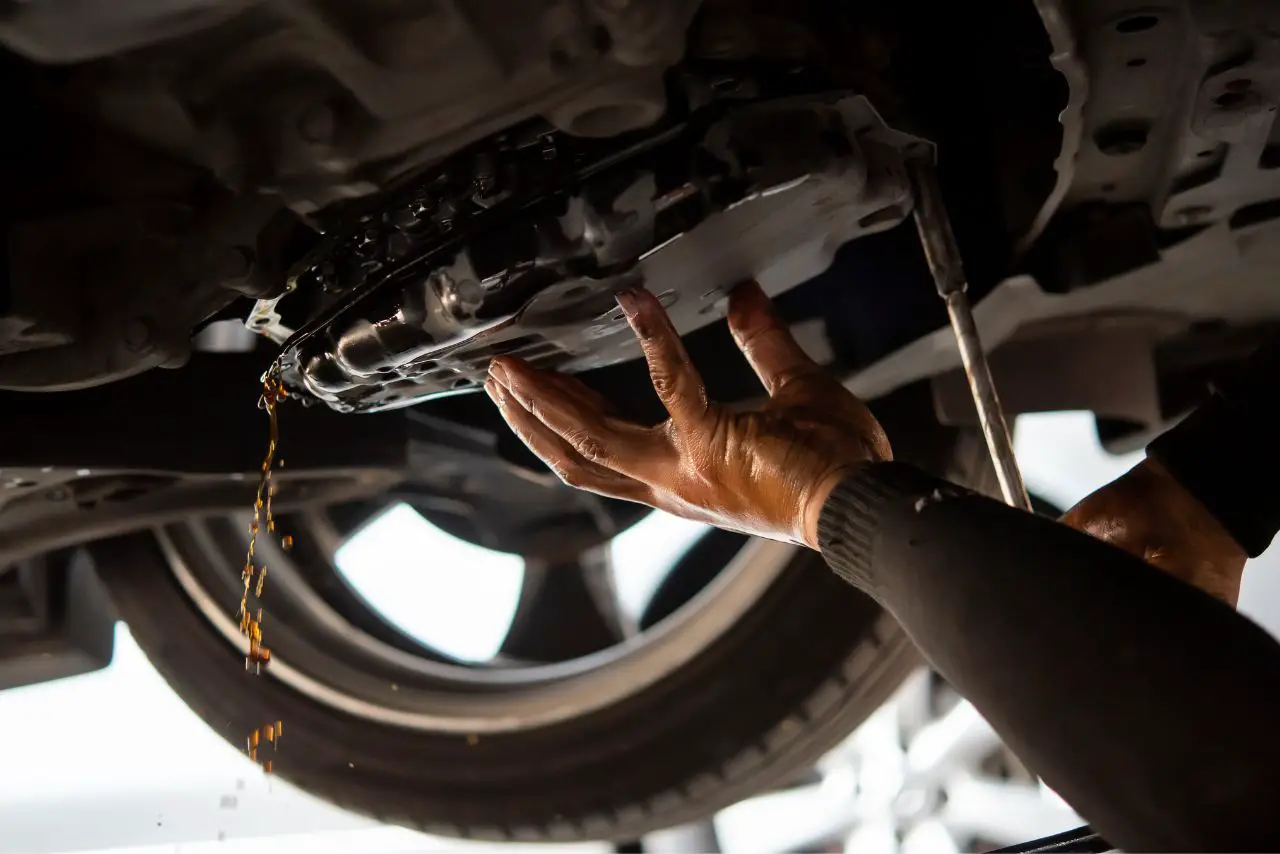Have you ever noticed that your power steering fluid levels rise above the recommended mark when you shut off your vehicle? This phenomenon, known as power steering overflow, can be quite perplexing for car owners.
Power steering overflows occur when excess fluid builds up in the system and cannot properly circulate.
In this blog, we will explore the reasons behind Why Power Steering Overflows when Shut Off and discuss potential solutions to prevent power steering overflow.
Understanding the causes of power steering overflow will not only help you maintain your vehicle more effectively but also ensure a smoother driving experience.
Table of contents
5 Reasons Why Power Steering Overflows when Shut Off?
Power steering overflows when shut off for various reasons. The 5 main culprits behind this issue include a clogged power steering filter, a leaking power steering hose, a failing power steering pump, a faulty power steering pressure relief valve, and air in the power steering system.
A clogged filter restricts fluid flow and can lead to overflow, while a leaking hose allows fluid to escape. When the power steering pump fails, it causes the fluid to overheat and overflow.
Similarly, a faulty pressure relief valve allows pressure buildup resulting in overflow. Lastly, air trapped in the system causes the fluid level to rise and ultimately leads to overflow.
To sum up:
Now let’s dive deeper into each of these issues related to why your car’s power steering.
1. Clogged Power Steering Filter:

To Prevent Power Steering Overflows Caused by A Clogged Filter:
Remember that neglecting a clogged power steering filter can lead to costly repairs and potentially compromise your overall driving safety. Stay proactive in maintaining a clean and functional power steering system.
2. Leaking Power Steering Hose:

A leaking power steering hose is one of the common reasons why power steering overflows when shut off. This occurs when the hose develops cracks or holes, allowing the fluid to escape and ultimately causing an overflow.
Here’s what you need to know about this issue:
Symptoms of a Leaking Power Steering Hose
Causes of Hose Leakage
Consequences of a Leaking Power Steering Hose
Diagnosing a Leaking Power Steering Hose
Repairing or Replacing a Leaking Power Steering Hose
Remember that addressing a leaking power steering hose promptly helps prevent further complications associated with fluid loss and potential damage to other components within your car’s steering system.
Table: Common Causes of Power Steering Overflows
| Cause | Description |
|---|---|
| Clogged power steering filter | Restricts fluid flow, leading to overflow |
| Leaking power steering hose | Allows fluid to escape and causes overflow |
| Failing power steering pump | Results in overheating of fluid, leading to overflow |
| Faulty power steering pressure relief valve | Builds up excessive pressure, causing overflow |
| Air in the power steering system | Causes rise in fluid level and subsequent overflow |
3. Failing Power Steering Pump:
When the power steering pump starts to fail, it can lead to various issues with the power steering system. Here are a few reasons why a failing power steering pump can cause the fluid to overheat and overflow:
It’s essential for vehicle owners and mechanics alike to recognize these signs as indicators of a potential failing power steering pump:
If any of these symptoms are experienced along with overflowing power steering fluid, it is advisable to have your vehicle inspected by a qualified professional promptly.
4. Faulty Power Steering Pressure Relief Valve:

When it comes to power steering overflows, a faulty power steering pressure relief valve can be one of the culprits.
This small but critical component is responsible for regulating the pressure within the power steering system. If it fails to function properly, it can lead to fluid overflow and other related issues.
Here are some key points about a faulty power steering pressure relief valve:
What Does the Pressure Relief Valve Do?
How Does It Contribute to Overflow?
Signs of A Faulty Relief Valve:
Potential Consequences:
Solution:
Remember that addressing any problems promptly can help prevent further damage and ensure a safe driving experience.
5. Air in the Power Steering System:

Air can enter the power steering system for various reasons, leading to an increase in fluid level and potential overflow. Here are a few possible causes:
To prevent these issues related to air in your power steering system:
By addressing these potential sources of air entry into your power steering system, you’ll minimize the risk of excess fluid levels leading to troublesome overflows when shutting off your vehicle.
Conclusion: Why Power Steering Overflows when Shut Off?
Power steering overflow can occur due to various reasons. A clogged power steering filter restricts the flow of fluid, leading to overflow. Similarly, a leaking power steering hose allows fluid to escape and causes overflow.
Furthermore, a failing power steering pump can cause the fluid to overheat and result in overflow. Additionally, a faulty power steering pressure relief valve allows the fluid pressure to build up excessively and leads to overflow.
Lastly, air in the power steering system can cause the fluid level to rise abnormally and result in overflow.
By addressing these common causes of power steering overflows when shut off proactively, car owners can ensure smoother driving experiences without having to deal with messy spills or potential damage caused by inadequate lubrication in their vehicle’s vital systems.
FAQs
How Can I Prevent Power Steering Fluid from Overflowing?
To prevent power steering fluid from overflowing, you can:
Check the fluid levels regularly and ensure they are at the proper level.
Avoid overfilling the power steering fluid reservoir.
Fix any leaks in the power steering system promptly.
Ensure the pressure relief valve is functioning correctly by having it inspected by a mechanic.
Does Power Steering Fluid Overflow Indicate a Serious Problem?
Power steering fluid overflow can indicate a problem in the power steering system, but it doesn’t necessarily mean it is a serious issue.
However, it should not be ignored as it can lead to power steering system damage if not addressed promptly.
Can I Drive My Car if The Power Steering Fluid Is Overflowing?
It is not recommended to drive your car if the power steering fluid is overflowing.
Continuously running the power steering system in this condition can result in reduced effectiveness of the power steering, increased heat, and potential damage to the system.
How Can I Fix Power Steering Fluid Overflow?
To fix power steering fluid overflow, you should:
Check the fluid level and adjust it to the proper level.
Inspect the power steering hoses and components for any leaks and repair or replace them if necessary.
Have the pressure relief valve checked and replaced if faulty.
Can Power Steering Fluid Overflow Cause Damage to Other Car Components?
If power steering fluid overflows, it can potentially damage other car components, such as belts, hoses, and electrical connections, due to the fluid’s corrosive nature.
Additionally, if the power steering system is not functioning properly, it can put additional strain on other parts of the steering system, leading to potential damage.
Latest Posts:
- 10 Best Gear Oil for Limited Slip Differentials (Reviewed!)
- Allison 1000 Transmission Fluid Type (5 Best Options!)
- 91 Octane Vs 93 Which One You Use? (The Surprising Truth!)
- Oil Pressure Gauge Not Working: (Guaranteed Fix!)
- 10 Best Transmission Fluid for 4l60e (Tested by Experts!)
- 10 Best Ceramic Coating For Wheels (Used By Real Users!)










